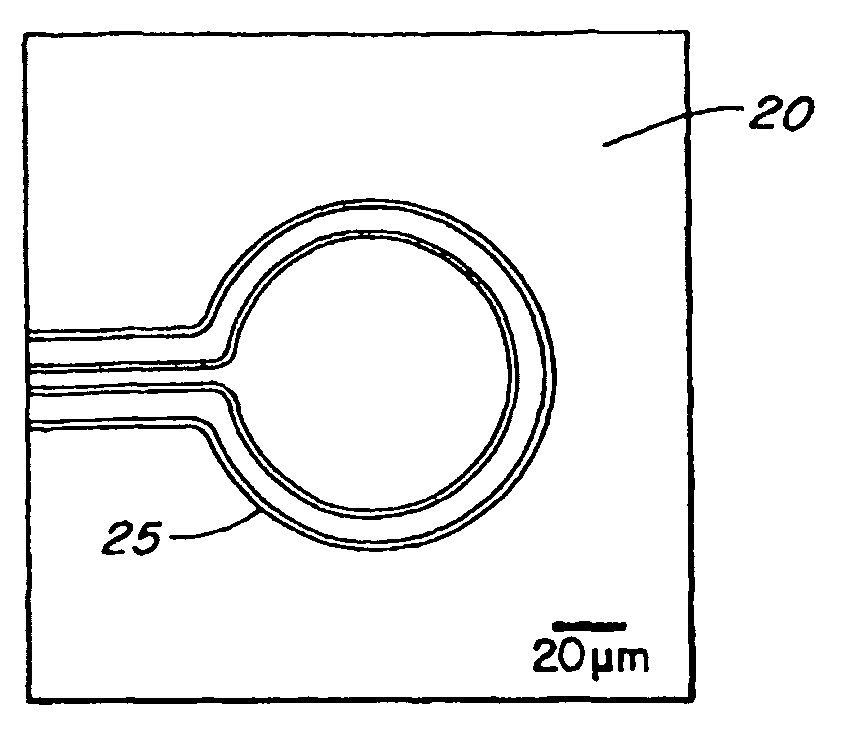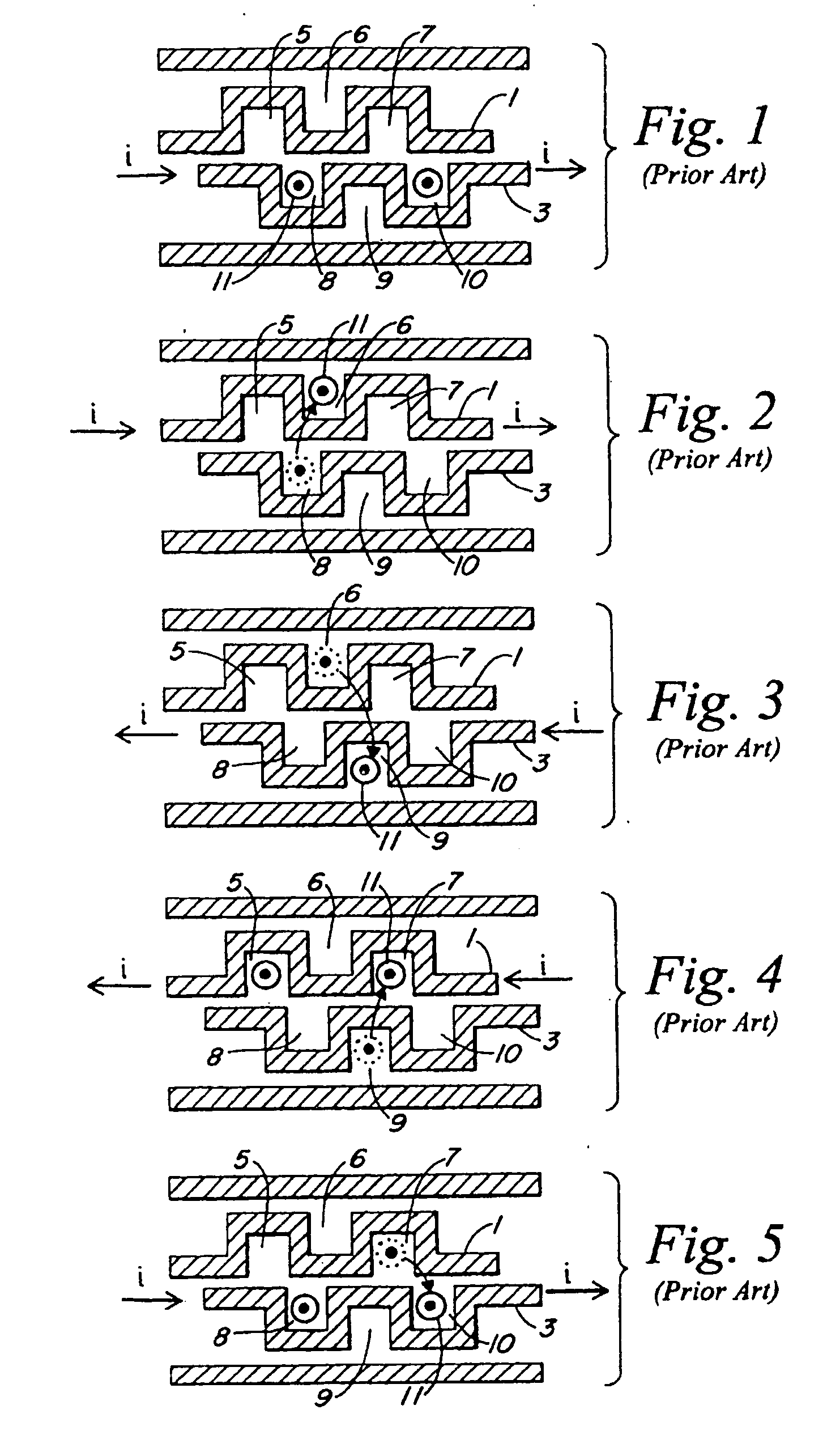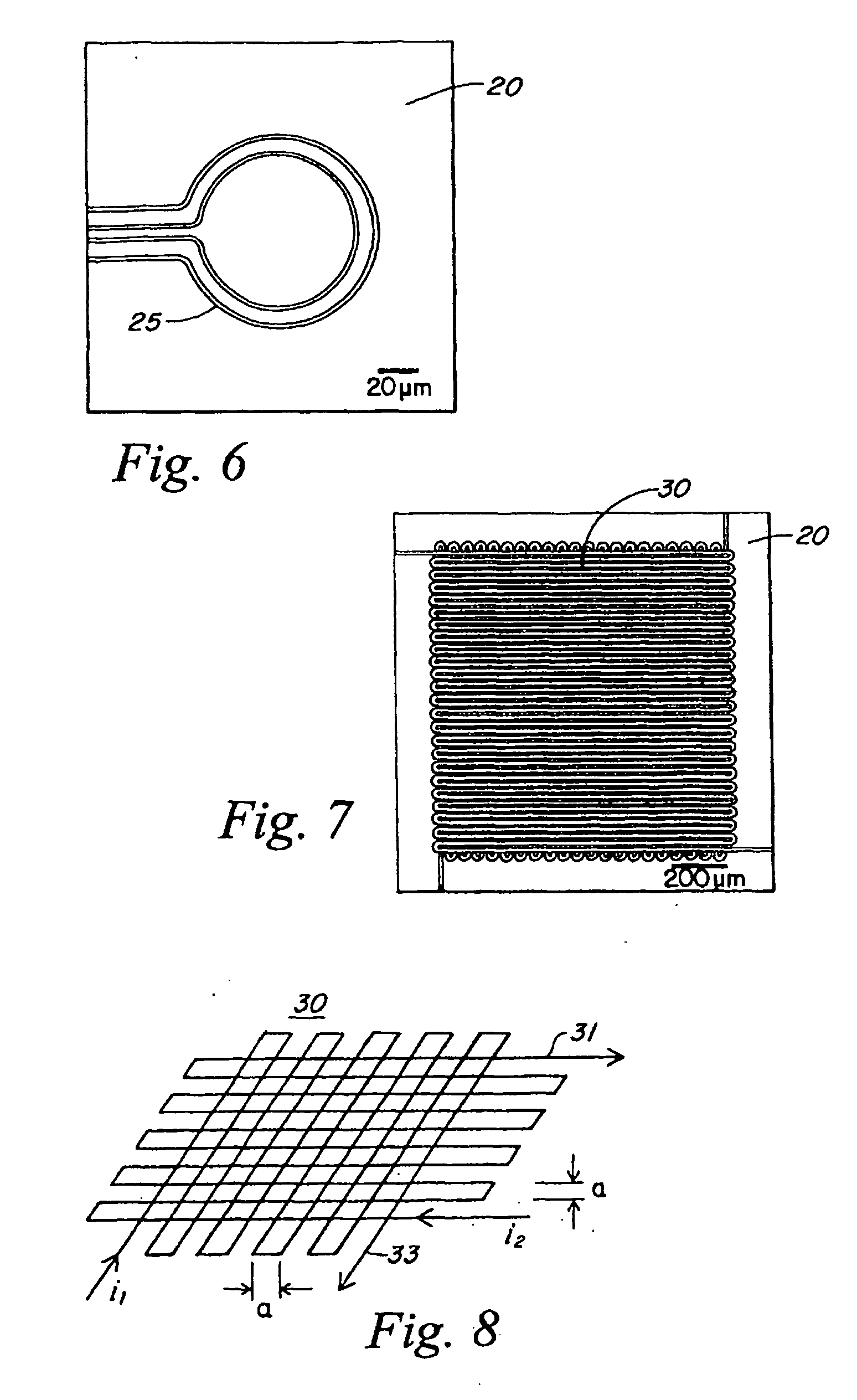System and method for capturing and positioning particles
a technology of positioning and particle, applied in the field of nanoscale object control, can solve the problems of limited number of traps that can be simultaneously formed and independently controlled, and the tip of two or more scanning probe electromagnet tweezers cannot be close together, and the conventional magnetic tweezers fail to provide individual control of multiple magnetic beads
- Summary
- Abstract
- Description
- Claims
- Application Information
AI Technical Summary
Benefits of technology
Problems solved by technology
Method used
Image
Examples
example 1
[0108] 1. Substrate cleaning (TCE, Acetone, and Methanol)
[0109] 2. Photolithography (1.sup.st microconductor conductor array pattern)
1 Spin Primer 5000 rpm 40 sec Spin Photoresist 1813 5000 rpm 40 sec Bake(hot plate) substrate 100.degree. C. 3 min 30 sec UV exposure 10 mW / cm.sup.2 6 sec Evaporate Cr 100 .ANG. Au 800 .ANG.
[0110] 3. Plate with gold solution
[0111] Attach leads to the Au pattern in the substrate
[0112] Put the sample and electrode(Pt) in Au solution
[0113] Sample-cathode(-)
[0114] Pt plate-anode(+)
[0115] Apply current (0.1 mA) until the resistance of the pattern drops to 100 .OMEGA.
[0116] 4. Photosensitive polyimide (1.sup.st insulating layer)
2 Spin HD2729 6000 rpm 45 sec Soft bake(hot plate) 60.degree. C. 4 min 80.degree. C. 4 min 100.degree. C. 4 min Contact pads mask UV exposure 10 mW / / cm.sup.2 1 min Develop in DE 6180 40 s Rinse in RI 9180 20 s Blow dry 20 s Thermal cure(hot plate) 120.degree. C. 30 min ramp up to 260.degree. C. at 2.degree. C. / min, 260.degree. C. 30 m...
example 2
[0124] 1. Clean Silicon wafers: Ultrasonic 10 min. each in TCE, Acetone and Methanol and blow dry.
[0125] 2. Spin PMMA (495K, 4%)
4 a. 500 rpm 5 sec b. 3000 rpm 30 sec
[0126] 3. Softbake(on hot plate) 5 min at 180 C.
[0127] 4. Spin PMMA (495K, 4%)
5 a. 500 rpm 5 sec b. 3000 rpm 30 sec
[0128] 5. Softbake(on hot plate) 5 min at 180 C.
[0129] 6. Spin PMMA (950K, 2%)
6 a. 500 rpm 5 sec b. 3000 rpm 40 sec
[0130] 7. Softbake(on hot plate) 5 min at 180 C.
[0131] 8. Write the patterns of the 1.sup.st layer microconductor array using E-beam lithography
[0132] 9. Develop the patterns using PMMA developer (1 min)
[0133] 10. Evaporate Cr (10 nm) and Au (200 nm) using thermal evaporator.
[0134] 11. Lift off: Removes unexposed parts.
[0135] 12. Evaporate Al.sub.3O.sub.4 for 200 nm: acts as an insulator
[0136] 13. Repeat 2-12: writing second layer of conductors and insulator
[0137] 14. Attach the leads
[0138] The choice of substrate on which the matrix is fabricated preferably is made based on three major factors:...
PUM
| Property | Measurement | Unit |
|---|---|---|
| width | aaaaa | aaaaa |
| diameter | aaaaa | aaaaa |
| height | aaaaa | aaaaa |
Abstract
Description
Claims
Application Information
 Login to View More
Login to View More - R&D
- Intellectual Property
- Life Sciences
- Materials
- Tech Scout
- Unparalleled Data Quality
- Higher Quality Content
- 60% Fewer Hallucinations
Browse by: Latest US Patents, China's latest patents, Technical Efficacy Thesaurus, Application Domain, Technology Topic, Popular Technical Reports.
© 2025 PatSnap. All rights reserved.Legal|Privacy policy|Modern Slavery Act Transparency Statement|Sitemap|About US| Contact US: help@patsnap.com



